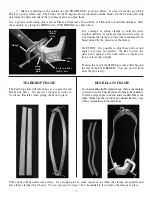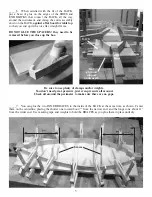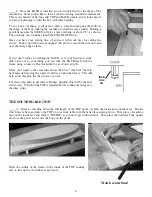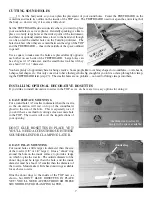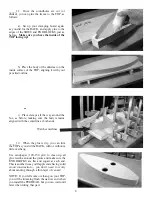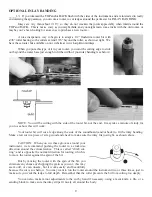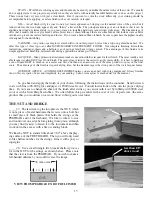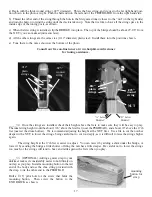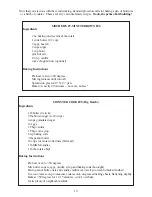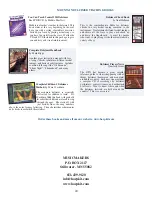
OPTIONAL INLAY BANDING
_____13. If you trimmed the TOP and/or BACK flush with the sides of the instrument, and are interested in really
customizing the appearance, you can use a router to cut ledges around the perimeter for INLAY BANDING.
Inlays are very thin (about 1/16”), so they do not weaken the joints appreciably when inlaid around the
TOP and BACK. This is not as scary as you might think, and you might learn some tricks with the old router, or
maybe you’ve been looking for an excuse to purchase a new router....
NOTE: You will be cutting with the side of the router bit, not the end. It may take a minute of study for
you to see how this will work.
Your router bit will cut a ledge along the side of the soundboard (and/or back) to fit the inlay banding.
Make a test cut in a piece of scrap wood and check to make sure the inlay fits just right, as shown above.
A nice inexpensive way to begin is to adapt a 1/2” flush-trim router bit with
a3/8” roller bearing so the cutters extend 1/16” beyond the roller, as shown at right. We
have these router bits available on our website at www.harpkit.com/inlays.
When you put athis type of it in your router, you want the cutting edge to stick
out beyond the router base just enough to fit the width of your inlay banding (see below).
CAUTION: When you cut these grooves around your
instrument, we recommend pushing the router in a clockwise
direction around the circumference. This is called “climb cut-
ting”, and is opposite the normal direction for routing, which is
to move the router against the spin of the bit.
But by moving the router with the spin of the bit, you
eliminate any chance of chipping the grain as you cut. this may
seem odd, or even unsafe, but it works easily and beautifully
because the cut is so shallow. You may want to run the router around the instrument two or three times, just to
make sure you caut the ledge to full depth. Remember that the roller prevents the bit from cutting too deeply.
You can also make minor adjustments to the cut by hand if necessary, using a razor knife, a file, or a
sanding block to make sure the inlay strips fit nicely all around the body.
Router
9



